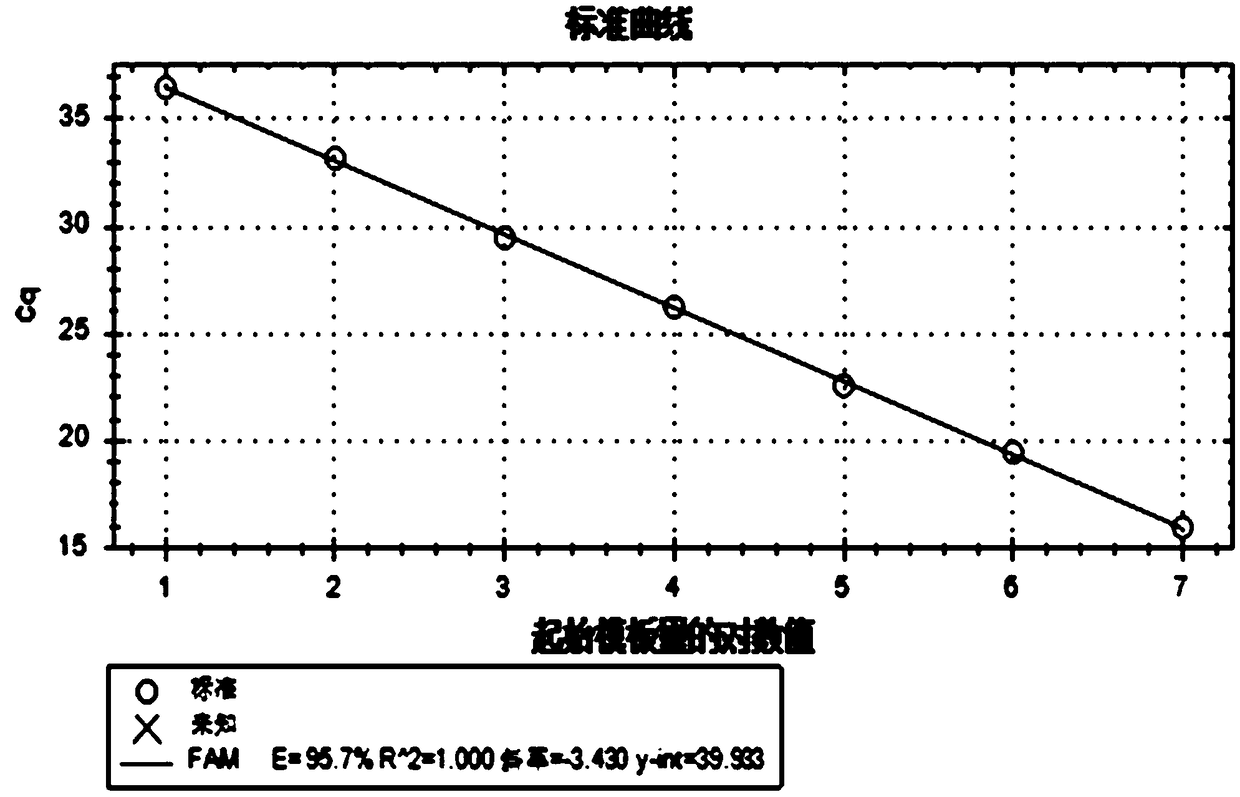Quadruple fluorescent quantitative polymerase chain reaction (PCR) detection kit for porcine intestinal coronavirus
A detection kit and coronavirus technology, applied in the detection/inspection of microorganisms, resistance to vector-borne diseases, biochemical equipment and methods, etc., can solve problems such as difficult differential diagnosis, serious harm, and difficult diagnosis of diarrheal diseases, and achieve Easy to collect and save, wide audience, easy to promote the effect
- Summary
- Abstract
- Description
- Claims
- Application Information
AI Technical Summary
Problems solved by technology
Method used
Image
Examples
Embodiment 1
[0049] Example 1. Design and synthesis of 4-fold fluorescence quantitative PCR primers and probes for porcine epidemic diarrhea virus, porcine transmissible gastroenteritis virus, porcine deltacoronavirus and porcine intestinal alphacoronavirus
[0050] Using the sequence comparison of the known porcine epidemic diarrhea virus M protein, porcine transmissible gastroenteritis virus N protein, porcine deltacoronavirus M protein and porcine intestinal alphacoronavirus N protein gene sequence, find out the conserved region, and then use Oligo6 software designed 4-fold fluorescent quantitative PCR primers, and the primer sequences were synthesized by Suzhou Jinweizhi Technology Co., Ltd. The 4 pairs of primers are:
[0051] Primer name and label
sequence
SEQ ID No. 1 (PEDV-F)
GATACTTTGGCCTCTTGTGT
SEQ ID No.2 (PEDV-R)
CACAACCGAATGCTATTGACG
SEQ ID No.3 (TGEV-F)
CAGATAGAAGTCACGTTCACA
SEQ ID No.4 (TGEV-R)
TCTCTGTTCTTTTGCCAC
...
Embodiment 2
[0055] Example 2. Determination of Primer and Probe Specificity
[0056] Use the primers for amplifying porcine enteric coronavirus to amplify the corresponding fragments, clone the amplified fragments into the T vector, screen the positive plasmids through transformation, plasmid extraction, enzyme digestion and PCR identification, measure the concentration, and calculate the copy number. Four kinds of positive plasmids of porcine epidemic diarrhea virus, porcine transmissible gastroenteritis virus, porcine deltacoronavirus and porcine enteric alphacoronavirus were divided into 1×10 7 , 1×10 6 Equal concentrations were diluted 10 times, and equal copy numbers were mixed, and then amplified with four pairs of primers and corresponding probes to test the specificity of the primers and probes. The results show that the corresponding primers and probes for porcine epidemic diarrhea virus, porcine transmissible gastroenteritis virus, porcine deltacoronavirus and porcine intestina...
Embodiment 3
[0057] Embodiment 3. Determination of reaction system and reaction conditions
[0058] The optimal concentration of primers and probes for screening 4-fold fluorescent quantitative PCR amplification reactions is as follows: Figure 19 , 20 shown; based on this, all the primers were mixed to screen for the optimal reaction concentration of each primer. The optimal primer and probe reaction concentrations of the 4-fold fluorescent quantitative PCR detection method were finally determined by optimization screening as follows:
[0059]
[0060] The reaction system is:
[0061]
[0062] The reaction conditions are:
[0063]
PUM
 Login to View More
Login to View More Abstract
Description
Claims
Application Information
 Login to View More
Login to View More - R&D Engineer
- R&D Manager
- IP Professional
- Industry Leading Data Capabilities
- Powerful AI technology
- Patent DNA Extraction
Browse by: Latest US Patents, China's latest patents, Technical Efficacy Thesaurus, Application Domain, Technology Topic, Popular Technical Reports.
© 2024 PatSnap. All rights reserved.Legal|Privacy policy|Modern Slavery Act Transparency Statement|Sitemap|About US| Contact US: help@patsnap.com










